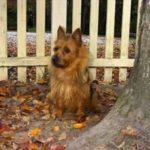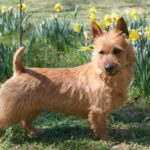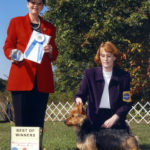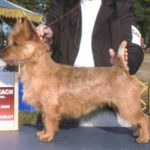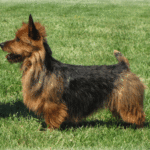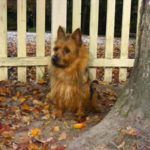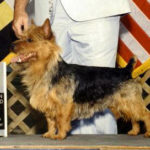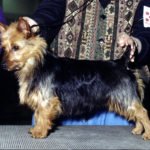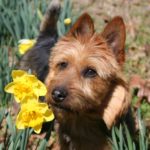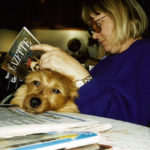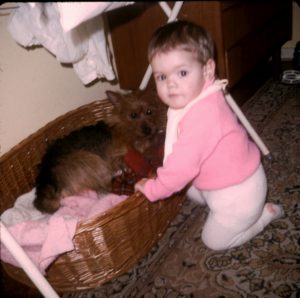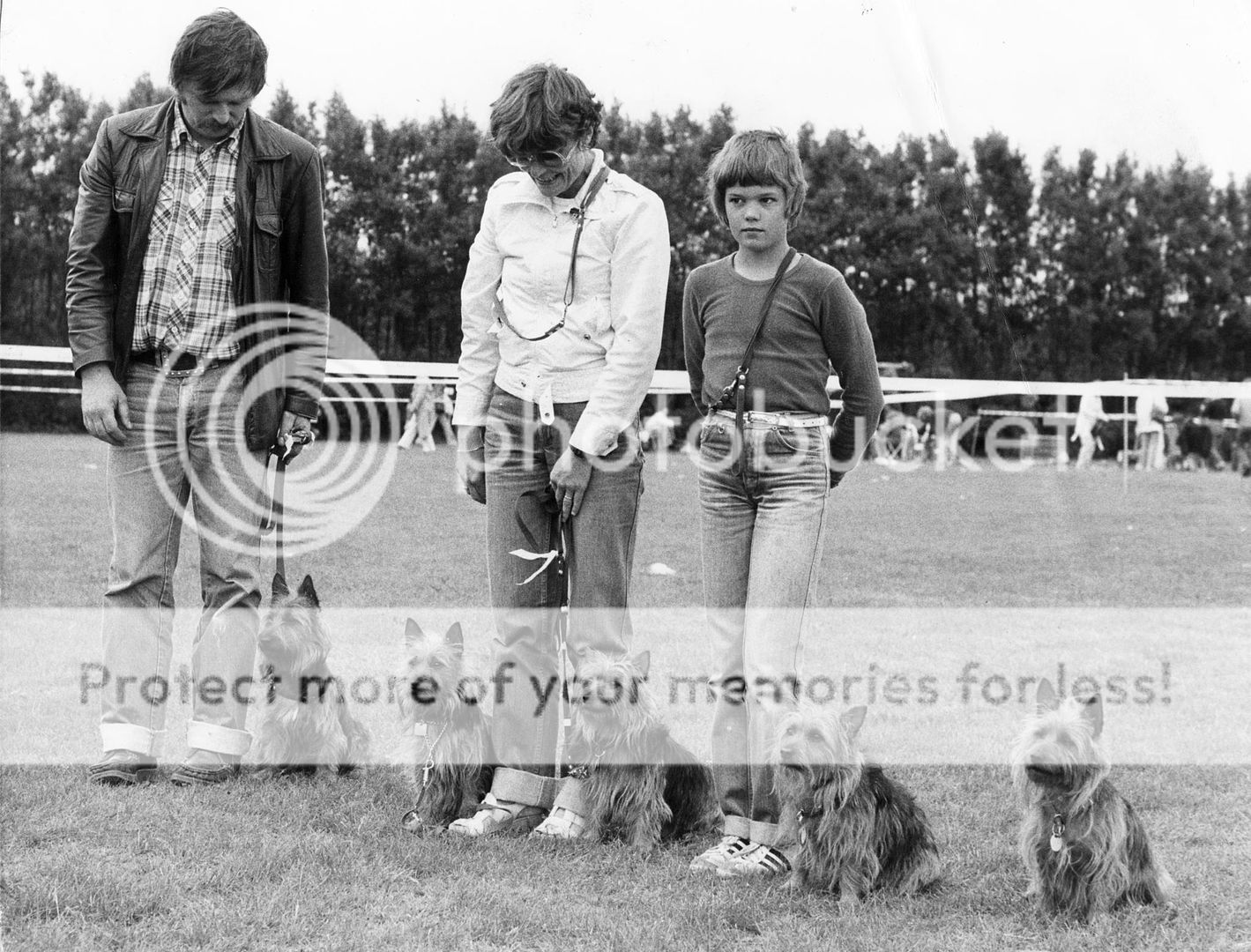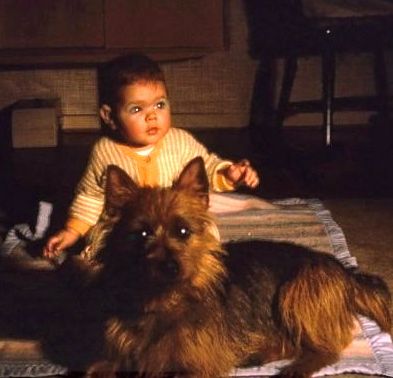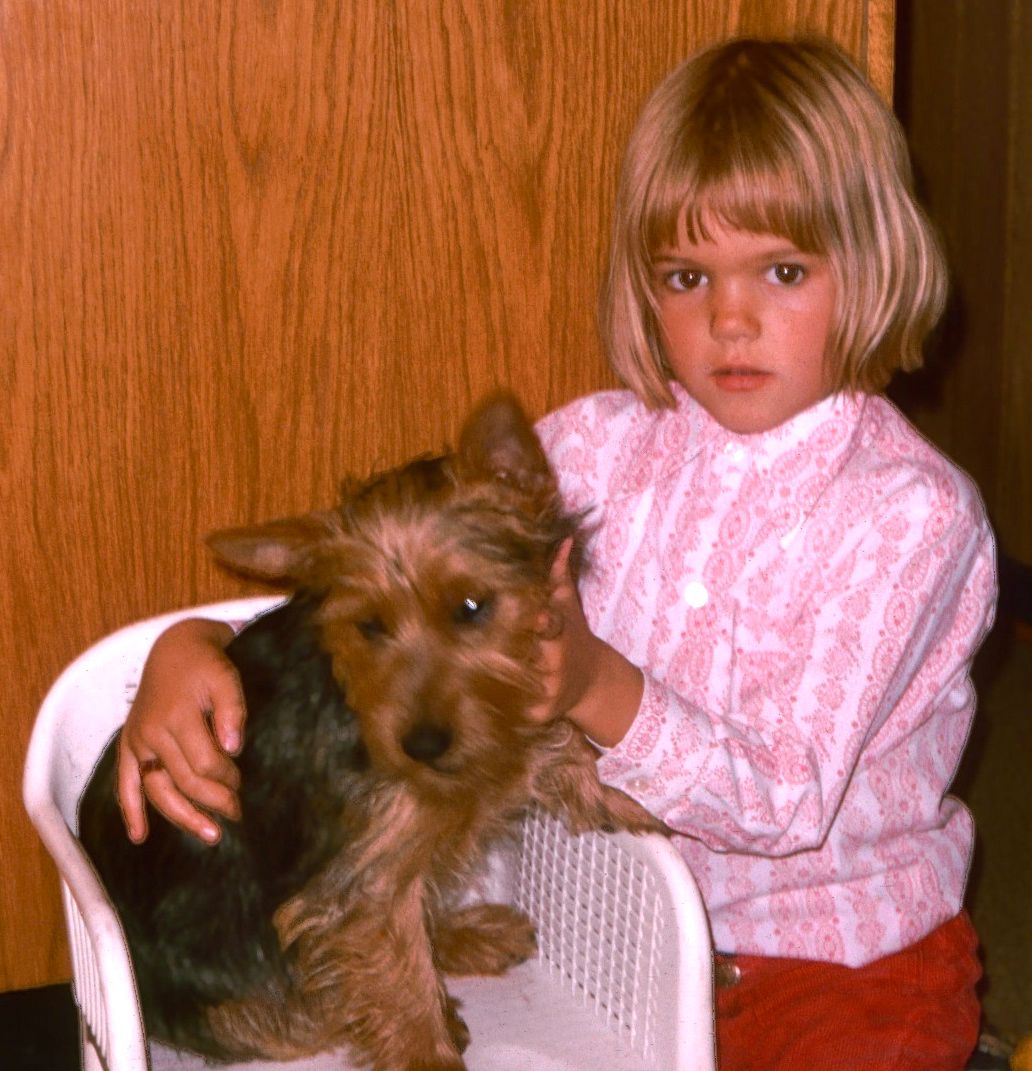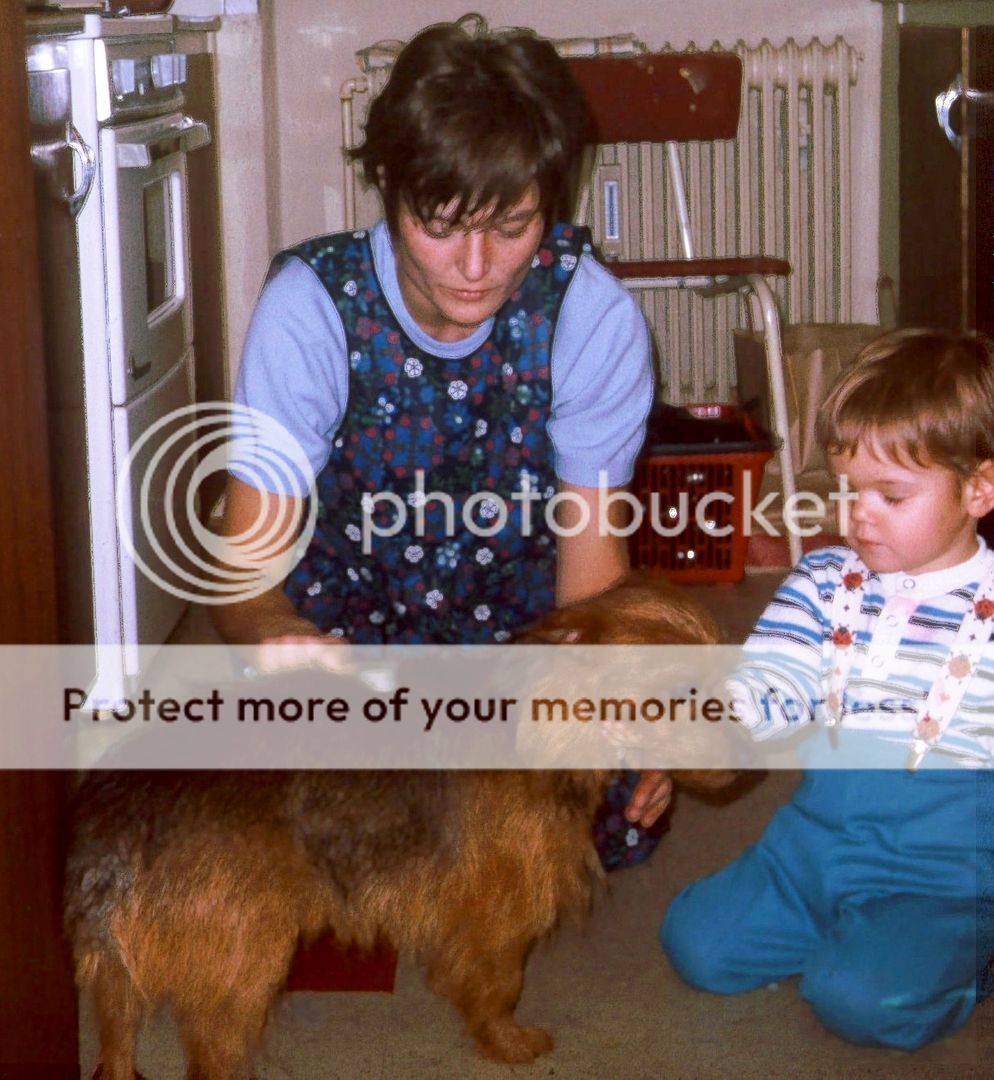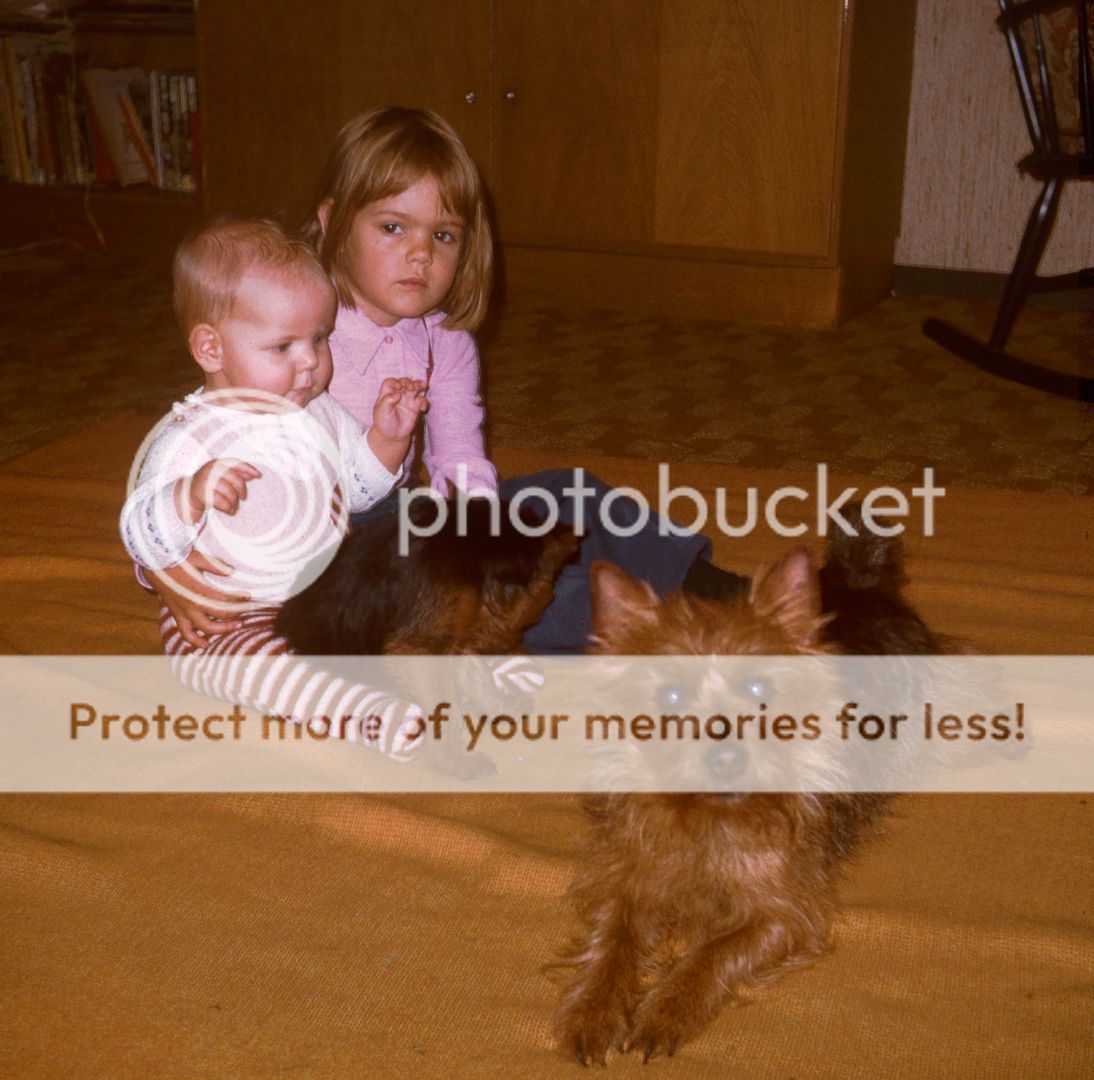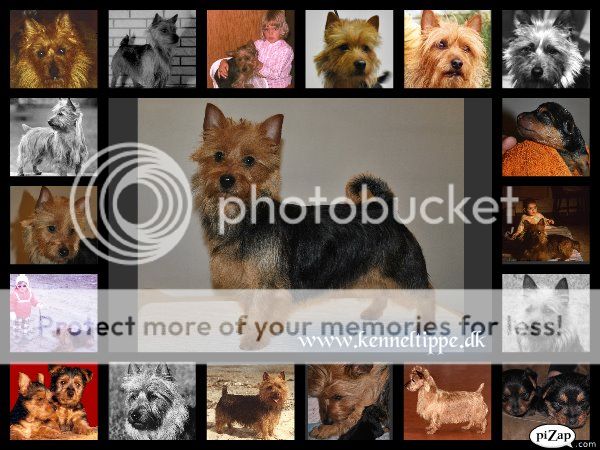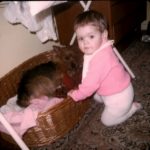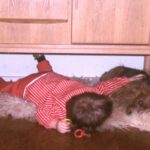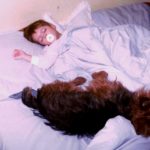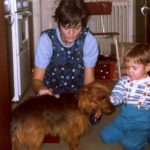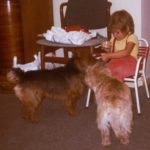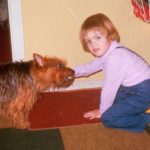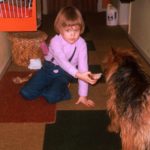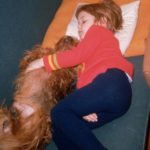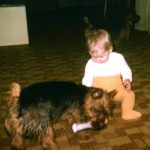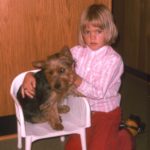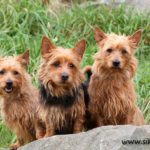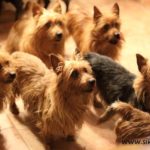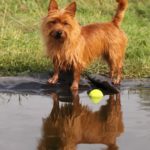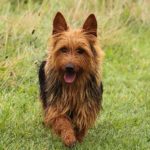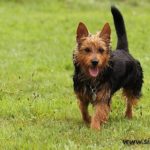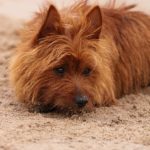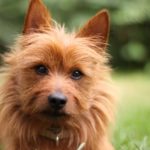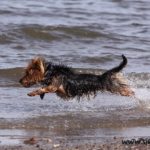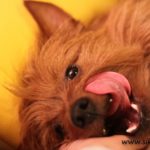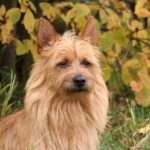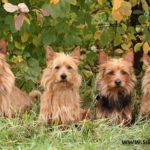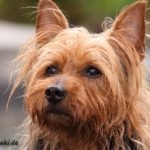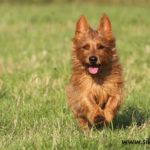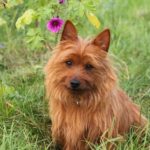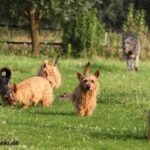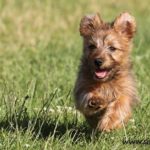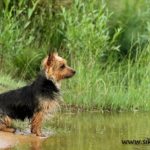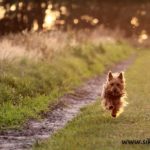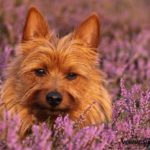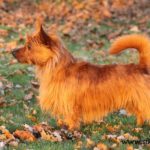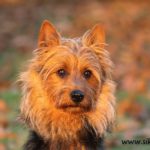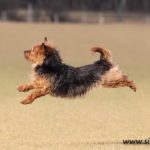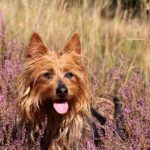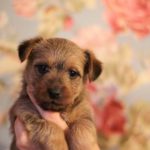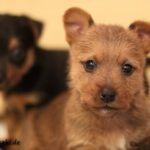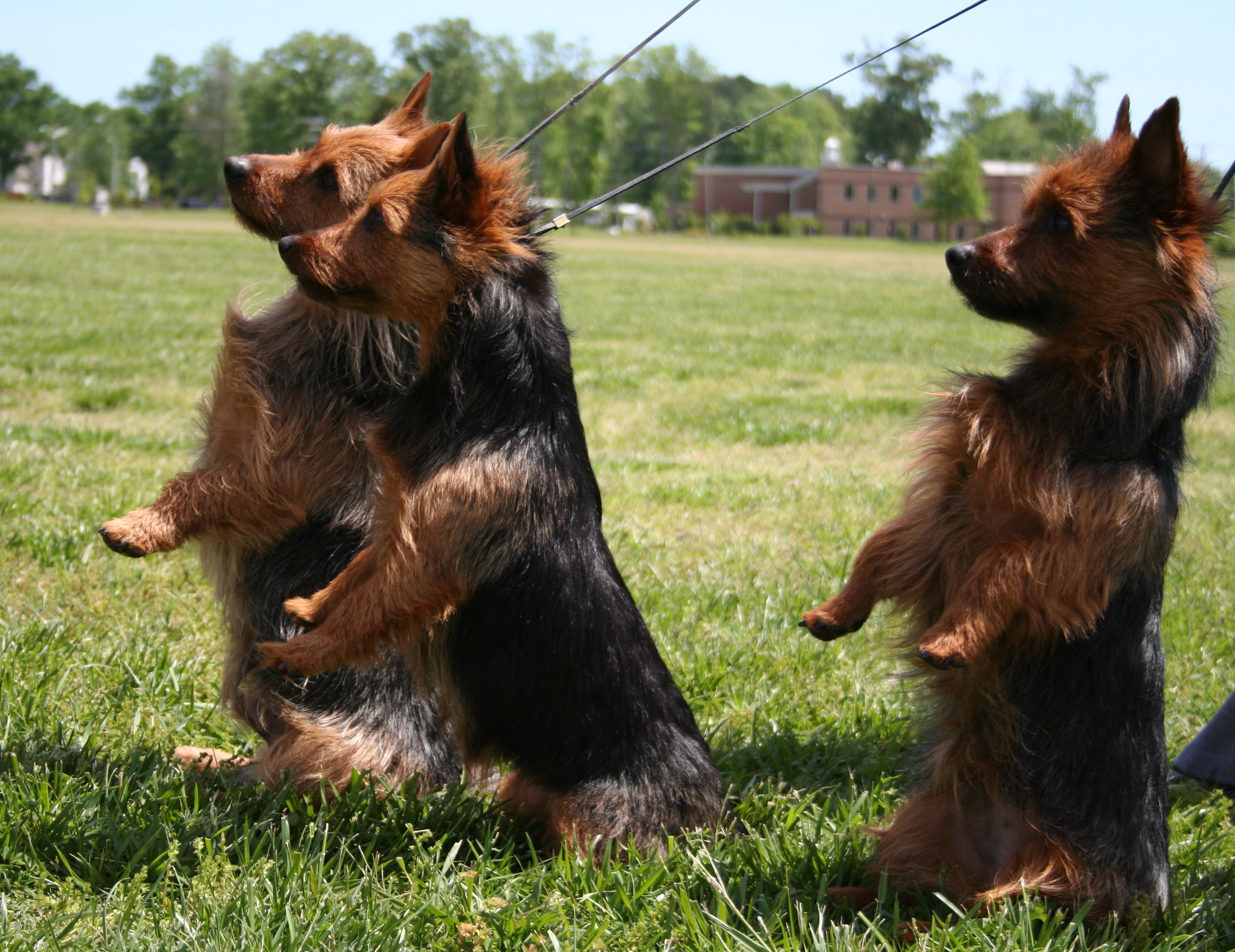
Sabine and Michelle, can you share with us your history in dogs?
Sabine: My family’s love affair with purebred dogs began when my great-grandfather received a show quality boxer bitch as a gift. My grandmother never bred a litter herself but enjoyed putting championships on the dogs she bought. My aunt bred English Cockers and Schipperkes. My mother bred, showed, and trained German Shepherds during my early childhood, followed by 30 years of successfully breeding and exhibiting Standard Schnauzers. My current Schnauzer goes back to her lines. When my mother started having health problems, she became interested in Norfolk and Australian Terriers, which she considered a more appropriate size for her age.
Did you have dogs as a child?
Sabine: During most of my childhood we had multiple Standard Schnauzers and occasional litters of puppies. My brother and I leash trained the puppies and often taught them “sit” and “shake hands” before they went on to their forever homes. The Pinscher and Schnauzer breeds had been greatly reduced in numbers during WWII and their breeders realized that, in order for their breeds to thrive, they needed to make an active effort to get young people interested in the dogs. As a result Pinscher and Schnauzer specialty shows were very kid-friendly and I had a chance to meet and pet most of the great Standard Schnauzer foundation dogs. Standard Schnauzers became the love of my life. I hope to always have one but am deterred from breeding them by their large-sized litters.
Michelle: Yes, I grew up with a Standard Schnauzer who lived under a footstool. She was devoted to me. She loved to sneak out from under her footstool to steal my peanut butter and jelly sandwiches. Later we had a black lab that had seizures, a lab mix that could jump anything, and a Giant Schnauzer that looked like a bear. Then we got Rassi, our first Aussie. I still remember when she came to live with us from Oma (my Grandmother).
How did you become interested in showing?
Sabine: I didn’t. I was perfectly happy to be just a “pet person” until my mother railroaded me into showing. See below.
Michelle: Mom had an interest in it; I went along as kennel help for a number of years. Eventually I was promoted to videographer. Once I graduated pharmacy school I had paid my dues and got Bruce (Ch. Aussome Enter the Dragon).
When did you become acquainted with Aussies?
Sabine: I met my first Aussie during a visit to my mother in Germany during the spring of 1991. I was sitting in my mother’s kitchen as she was lamenting the fact that her charming little Aussie bitch, Rassi, which happened to be on my lap at the time, did not get along with her Norfolks. When my mother said she’d need to find another home for Rassi (Europasieger ’89, Dk D Am CH Rachell), foolish me said, “I’ll take her,” not realizing what a life-changing decision this would turn out to be. For one thing, I had to promise that I would breed Rassi, who at the time had her Danish and German championship titles. For another, my newly acquired, adorable little girl, being a dominant bitch and every inch a terrier, contrary to what my mother had predicted, decided to rule our household with an iron fist. Our Lab and Lab mix did not object to being dominated by the little terrier, but our Giant Schnauzer was not at all pleased. I couldn’t blame her. Rassi asserted her dominance by jumping up and biting the Schnauzer’s ear during her first evening in our home. Those two always had a slightly rocky relationship. After Rassi had been living with my family in the United States for six months, in order to ensure that I was good and truly hooked, my mother gave me a male Aussie puppy. She had picked up Tho-Li Lucas in Denmark a few months before I was to pick him up from her. Lucas earned a reputation as the worst behaved puppy to ever stay at my mother’s house, but for us he was a perfect fit. Our big dogs adored him and he would play with them for hours on end. Having received two very nice Aussies, showing and breeding naturally followed, especially since the dogs had a blast at shows. I still have one of their daughters, 17-year-old Evie (CH Aussome Miss Eveready).
Michelle: I met my first Aussie when Rassi came home with my mom as she apparently was terrorizing my Oma’s dogs. Oma talked Mom into taking her. Oma was quite slick.
What other breeds have you owned?
Sabine: Standard and Giant Schnauzers, Labrador, and a kleptomaniac, fence jumping, Labrador mix, who, had she been my first dog, would have been my only dog ever.
Michelle: I currently have a Standard Schnauzer, a cat, tropical fish, and a Mealy Amazon parrot.
What is it that you like about Aussies?
Sabine: I enjoy their intelligence and happy nature, and love the fact that they’ve not lost their ability to do the job they were bred for. Being natural hunters has occasionally had a downside, as Tessie would catch frogs, bring them in through her doggie door, and release them indoors. Though I love toads, I don’t really want them living indoors under the hot tub. You also don’t realize how many feathers are on a dove until a dog has eaten one in the house. Feathers were still coming out of nooks and crannies a year later. Also, I never knew how messy snakes could be until Mellie killed a copperhead and shook it until bits of snake were splattered all over the walls.
Michelle: Aussies are fun, exasperating and interesting because they challenge you.
My Schnauzer does what I ask immediately with no question. The Aussies are always evaluating “is this in my best interest? Perhaps we can negotiate this.” Each one is different, but full of personality.
How many years have you been in Aussies?
Sabine: Since 1991.
In your years with Aussies, how do you feel we are progressing or aren’t we, with regard to health?
Sabine: Judging by the results of the two health surveys, we’re not making much progress.
Michelle: I think the breeders in this country are still not as open about health problems as they should be. If you ask Mom or me about our dogs we will tell you what health problems the dog has, as well as, the health of its littermates its parents, and the grandparents, etc. We will probably tell you so much you will think we must have the most unhealthy dogs in the world. I don’t believe that’s the case. I think we work hard to keep up with our dogs, and we are very open about health. I wish everyone was that way.
With regards to health, what more would you like to see done?
Sabine: I think we need to accept that Aussies are not an especially healthy breed. According to ATCA’s two health surveys diabetes and other endocrine diseases are a major concern in the breed, plus health incident reports of Addison’s Disease in two recent ATCA newsletters should set off alarm bells.
Michelle: See my comments above.
How many litters have you bred?
Sabine: Including the ones I’ve co-bred, 22.
Michelle: Two on my own; I have assisted Mom multiple times.
Do you feel the breeders in the US are on the right course with breeding programs?Sabine: Yes and no. There are some truly beautiful dogs out now, especially in the red variety but, sadly, that is likely to be detrimental to the blue/tans. Judging by what we saw at the recent specialty, I think we need to be careful not to lose the correct outline. Front legs should be set well under the dog. If they’re not, the dog will look generic, not like an Aussie. Also, at the National I noticed many rears stayed under the dog at all times.
Michelle: That’s hard to answer. There is always room for improvement. I do wish there were more quality blue tans being bred in this country.
What if anything would you like to see more emphasis on regarding breeding programs?
Sabine: Health. Sharing information honestly and voluntarily. No amount of health testing (which cannot address the BIG problem in the breed anyway) can be as beneficial to anyone’s breeding program as honesty. I would also love to see more emphasis on clear blue/tan color that doesn’t come out of a bottle (dyed or chalked dogs). The good ones hold their color into old age. I see popular sire syndrome as a potentially huge problem in the US.
Michelle: Blue tans, correct size (they should not look weedy, like giraffes, or be 12 plus inches tall), and they should be able to move. In my opinion at the specialty the veterans moved much better than the majority of the class entries and that’s a problem. At a minimum the movement should be balanced, rears should not be along for the ride so to speak.
Have you imported dogs? Exported?
Sabine: Yes, my two foundation Aussies came from Tho-Li kennel in Denmark. Tailor (Dk Am CH Aussome’s American Tale ROM) spent a couple of years at Tho-Li where she earned her Danish title and whelped a litter. After that she came back to us in whelp to Dk CH Kisamba’s Allways Happy, and out of that litter we kept Mellie (CH Aussome Kiss of the Dragon) and Bruce (CH Aussome Enter the Dragon). I also imported a bitch puppy from Norway and ended up placing her as a pet with friends, because her patellas were grade 1 in both knees. You have to be willing to accept the fact that what you import may not be of use to your breeding program. Our insistence that puppies must be picked up here in person puts a considerable damper on exporting.
How did you find those experiences?
Sabine: Excellent. I’ll always miss Rassi and Lucas. Tailor returned from Denmark with lovely manners, and our half-Danish puppies, Mellie and Bruce, finished very easily and produced well for us.
Have you made International friends as a result of those experiences?
Sabine: Yes
How has viewing the Aussie world through “international eyes” impacted your own breeding program?
Sabine: I have the greatest respect for the breeders of the country of origin and try to keep in mind the FCI breed standard as well as the AKC one when making breeding decisions and deciding on a puppy to keep.
What do you think the advantages are of being a mother and daughter in the same breed?
Sabine: Being able to bounce ideas off one another. Sharing knowledge. We also compensate for each other’s shortcomings. I’m the better groomer, Michelle the better handler. Together we do a nice job.
Michelle: For me it’s been priceless. Mom has a wealth of knowledge, and is a top-notch groomer. No one is harder on me.
Do you think being in a multi-generation family, involved in Aussies is advantageous to the breed?
Sabine: Yes. I believe that is the case, even if other generations of one’s family are in different breeds. I gained much knowledge from my aunt, who had a great deal of interest in nutrition, and my mother, whose area of expertise was canine behavior. I think we should be concerned that so often much information disappears with older breeders. It is unfortunate that many breeders only last a few years in their chosen breed. Clearly this is not good for any breed for so many reasons.
Michelle: Absolutely, there is a continuity of knowledge and breeding decisions. I think you can have that outside of a family though. The older folks in the breed should be nurturing relationships with the newer folks to the breed, and the newer folks should be listening, watching, and asking questions. It’s wonderful when you see these types of relationships.
Should the breed be encouraging and cultivating Junior showmanship?
Sabine: Yes, I think Aussies make great dogs for juniors, and it helps ensure a future for the breed.
Michelle: Absolutely
What has been your high point, in the breed?
Sabine: Fleetwood’s first fun match win at 5 months. He showed perfectly! Nothing will ever be able to equal that. Of course his perfect behavior underwent a transformation as soon as he hit 6 months.
Michelle: I would say when Fleetwood won the specialty, but also the year Mellie and Bruce won at Montgomery. Showing the two of them was special. When I traveled to Westminster by myself with Lucy that was also a lot of fun and a trip I will never forget.
Who has been your favorite Aussie and why?
Sabine: I’ve had many favorites. Rassi was perhaps the most charming. Lucas was my most devoted buddy ever. He was tough as nails, totally devoted to me, had a great sense of humor, and was never happier than when he had puppies dangling from his neck ruff. How can anyone resist that? Fleetwood (BISS CH Aussome Fleetwood Mac) made friends with everyone he met. He was a love! He would greet visitors with a toy in his mouth, talking all the while. I loved his personality as much as his looks. I hope to live long enough to have a chance to use his frozen semen. If not, Michelle will inherit it.
Michelle: I can’t pick one, so here is my current crew.
Bruce- the party guy, 10 years old and hasn’t slowed a bit. Never met a stranger.
Shannon- the mastermind, I took classes with her and trained her for over 2 years before we learned to respect each other. When she decides to do something for you though she is flawless.
Bridget- the best personality hands down of any Aussie since Fleetwood. This was also the first time I picked a dog for myself from a litter different from my Mom’s pick. Thankfully it worked out.
Columbus- The red dog, many underestimate him because he is so laid back. He is, however, Shannon’s son, and quite capable of manipulating the other dogs if it gains him food. He is my favorite dog to show.
I also loved Lucas. He was such a high-energy dog, but he could settle down and be quite sweet. And Lucy was the consummate show professional. And Rassi and Fleetwood were charmers.
What do you feel your contributions have been to the breed?
Sabine: Hopefully, a push towards honesty.
How would you like to be remembered in the breed?
Sabine: As a darned good pet owner.
Michelle: As someone who put the dogs first.


